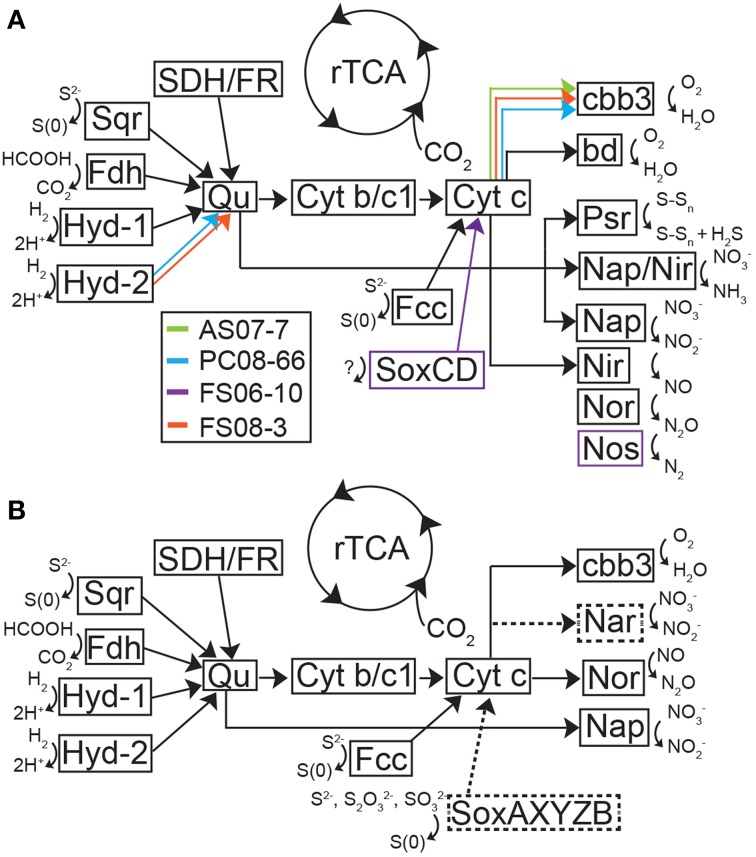Figure 5.
Theoretical model of metabolic processes and electron transport in the Sulfurovum-like genomic bins (A) and the Sulfuricurvum genomic bin (B) inferred from the presence of functional genes in these bins. (A) Model of metabolic pathways and electron transport in the Sulfurovum-like genomes based on putative proteins encoded in the genome bins. Black arrows represent genes present in all organisms in the genome and colored arrows represent functional genes identified in a subset of the four genomes. (B) Model of metabolic pathways and electron transport in the Sulfuricurvum genome based on putative proteins encoded in the genome bin. Dashed lines and boxes represent enzymes and reactions not present in the Sulfurovum-like genomes. Both models were based on Grote et al. (2012). bd, bd-type quinol oxidase; cbb3, cytochrome c oxidase; Cyt b/c1, quinone cytochrome oxidoreductase; Fdh, formate dehydrogenase; Hyd, hydrogenase; Nap, nitrate reductase; Nar, nitrate reductase, Nir, nitrite reductase; Nor, nitric oxide reductase; Nos, nitrous oxide reductase; Psr, polysulfide reductase; Qu, quinone; SDH/FR, succinate dehydrogenase/fumarate reductase; Sox, sulfur oxidation complex; Sqr, sulfide-quinone oxidoreductase.

